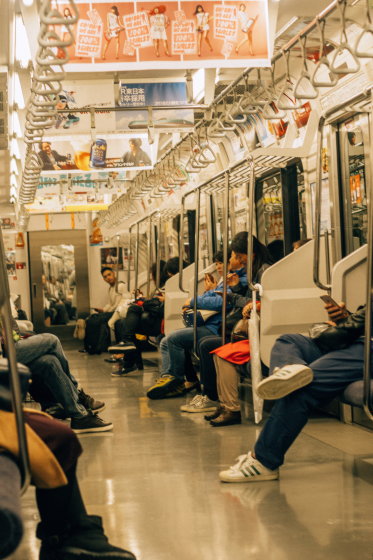It turns out that the flow of time feels slow when riding a crowded train

If you get on a crowded train where it is difficult to even move, all you can do is pray that you will get to the destination station as soon as possible. However, an experiment that used VR to reproduce a crowded train revealed that 'the more crowded the train, the slower the flow of time feels.'
Affective experience in a virtual crowd regulates perceived travel time | SpringerLink
Crowding and Perceived Travel Time in Public Transit: Virtual Reality Compared With Stated Choice Surveys - Saeedeh Sadeghi, Ricardo Daziano, So-Yeon Yoon, Adam K Anderson, 2022
https://doi.org/10.1177/03611981221130346
Are we there yet? Time slows down on crowded train
https://techxplore.com/news/2022-11-crowded.html
The flow of time that humans perceive depends on subjective emotions and the complexity of the situation, and it is generally said that happy times pass faster, and painful times feel slower. Previous studies examining changes in perceived time have experimented with computer-assisted tasks and on-screen stimuli, but this may not apply to real-world situations.
Therefore, a research team at Cornell University in the United States used a realistic VR application that reproduced the inside of a train to test changes in perceived time according to the degree of congestion. You can see the video of the application developed by the research team for the experiment in the following movie.
Movie 01 001-YouTube
Forty-one subjects aged 19 to 51 who participated in the experiment wore VR headsets and experienced virtual travel simulating the inside of a subway car at various congestion levels and times. Subject's journey begins with boarding a carriage resembling the New York City Subway, hearing an announcement to 'keep away from the closing door', and after the door closes, departs, accelerates, arrives at the next station, and rings the bell. It was said that it ended when it rang.
The congestion level fluctuates between ``1 person per square meter (35 people in the vehicle)'' and ``5 people per square meter (175 people in the vehicle)'', and the subject is in the vehicle. I was able to move and walk around and look around. The research team says that the passenger's avatar was made to reproduce natural human behavior, such as changing posture, reading a book, and looking at a smartphone.
The travel time of the virtual trip was randomly assigned from 60 seconds, 70 seconds, and 80 seconds, and each subject experienced a total of 5 virtual trips at different congestion levels. After each virtual trip, subjects reported how pleasant or unpleasant the experience was on a scale of 1 to 7 and were asked to estimate as accurately as possible how many seconds the virtual trip was. .
As a result of the experiment, it was found that the perceived travel time increased by an average of 1.8 seconds for each additional person per square meter. We found that travel times increased by about 10% in the busiest conditions compared to the least crowded ones. The change in perceived time was related to the degree of comfort and discomfort during virtual travel, and the research team believes that it may be due to the infringement of personal space due to congestion.

Saedeh Sadeghi, lead author of the paper and a Ph.D. It creates a feeling that makes the trip feel longer.”
Co-author Adam Anderson, professor of psychology at Kernel University, said, 'This study reveals how our everyday experiences and subjective emotions can profoundly distort our perception of time. 'Time is more than a clock shows. It varies depending on how we feel about it as a resource and how we value it.'
It seems that the average travel time for commuters using public transportation in the United States is just over 60 minutes, and based on the results of this study, workers' perceived travel time increases by 24 hours a year when public transportation is congested. will be. As a result, more people will choose to commute by private car instead of public transportation, and there is a possibility that carbon dioxide emissions will increase. The research team argued that the results of this study could help engineers improve vehicle design.

Related Posts:






